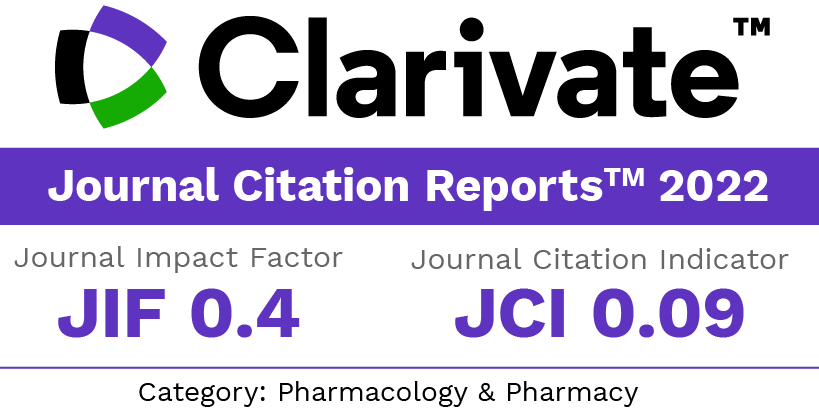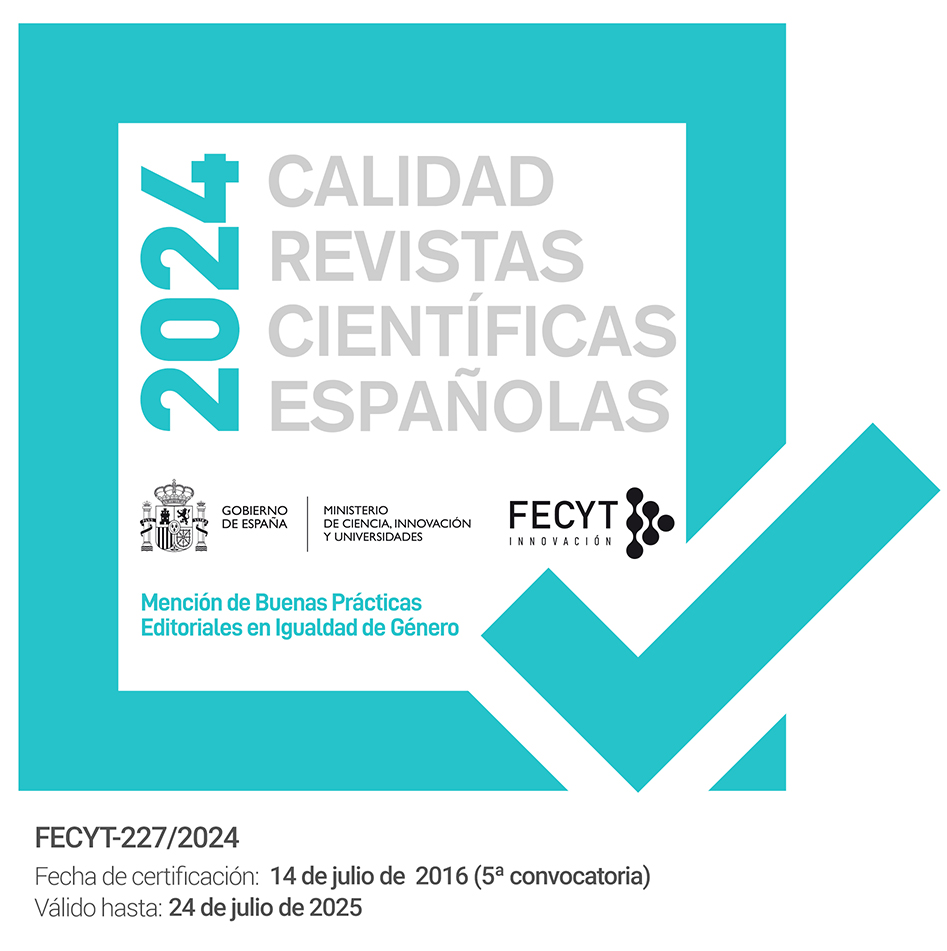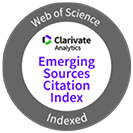Diseño y validación de un método analítico por cromatografía líquida de alta eficacia para la cuantificación de tolbutamida, acetamida y propianamida en dispersiones sólidas
Keywords:
tolbutamida, propianamida, acetamida, cromatografía líquida, CLAEAbstract
El estudio del tipo de interacción involucrada en la formación de dispersiones sólidas de tolbutamida con distintasproporciones de acetamida y propianamida, ha requerido del diseño y validación de un método analítico por cromatografíalíquida de alta eficacia (CLAE) que permita cuantificar la proporción de los transportadores en mezclas físicas y endispersión sólida. El método resultó ser lineal, preciso y exacto en el intervalo de concentración de 100-1,56 μg/mLpara tolbutamida y 50-0,781 μg/mL para acetamida y propianamida.Downloads
References
Al-Saieq, S.S., Riley, G.S. (1981). Polimorphism in Sulphonylurea Hypoglycaemic Agents: Tolbutamide. Pharm. Acta Helv. 56(4-5):125-129.
Ayres, J.W., Huang, H.P., Albert, K (1984). Generic Tolbutamide Tablet Dissolution: Intralot and Interlot Variation. J. Pharm. Sci. 73(11):1629-1634.
Cejudo U., B.L. y Quirino B., C.T. (1989) Diseño y Desarrollo Analítico y de Formulación para Tolbutamida en Tabletas. Parte I. Reporte de Investigación No. 56. UAM-X, México, 76 p.
Cejudo U., B.L. y Quirino B., C.T. (1989). Diseño y Desarrollo Analítico y de Formulación para Tolbutamida en Tabletas. Parte II. Reporte de Investigación No. 57. UAM-X, México, 40 P.
Consejo de Salubridad General(1996). Cuadro Básico de Insumos para el Primer Nivel de Atención. Catálogo de Medicamentos. México, pp. 5.3-5.6.
De Meijer, P.J.J. (1983). Study of Tolbutamide Tablets. Pharm. Weekbl. 118(10):190-193.
El-Shattawy, H., Kassem, A., Abdel-All, M., Fawzy, A. (1981). In Vitro and In Vivo Availability of Tolbutamide Tablets. Sci. Pharm. 49(2):162-171.
El-Shattawy, H., Kassem, A., Fawzi, A. (1982). Manufacture and Physical Characteristics of Directly Compressed Tolbutamide Tablets. Pharm. Ind. 44(2):204-207.
Ford, J.L. (1986). The currents status of solid dispersions. Pharm. Acta Helv. 61(3):69-88
García, R.M., Villafuerte, R.L. (1987). Modificación de la velocidad de disolución de ácido nalidíxico en tabletas fabricadas utilizando dispersiones sólidas. Rev. Soc. Quím. Méx. 31(1):41-45
Garzón, S.A. (1975) Factores Fisicoquímicos y de Formulación que Afectan la Biodisponibilidad de los Medicamentos. Simposio CIF. Memorias. México.
Girard C., M.E., López, A.A., Nava, G.O., Pérez, T.T. (1981). Bioequivalencia de Tolbutamida en Comprimidos de Tolbutamida y Cápsulas de Cloranfenicol. XVIV Congreso Nacional de Ciencias Farmacéuticas. Memorias. Rev. Mex. Cien. Farm. 12(2):38.
Girard C., M.E., López, A.A., Nava, G.O., Pérez, T.T. (1981). Equivalencia de Comprimidos de Tolbutamida del Comercio Nacional. XVIV Congreso Nacional de Ciencias Farmacéuticas. Memorias. Rev. Mex. Cien. Farm. 12(2):38.
Kane, A.K., Kanvinde, S.A. (1984). In Vivo-In Vitro Correlations of Tolbutamide Marketed in India. India Drugs. 21(8):323-325.
Manek, S.P. et al. (1981). In Vitro and In Vivo Availability of Tolbutamide Preparations Marketed in India. Indian Drugs 18(4):130-137.
Nava, O. y Pérez, T. (1981) Estudio de Bioequivalencia en Comprimidos del Comercio Nacional. Tesis Profesional. FCQ.UV-Orizaba, México, 79 p.
Posada, R.A. (1980).Seminario sobre Pruebas de Disolución: Tolbutamida. AFM, AC. Memorias. México, pp. 9-17.
Quirino B., C.T., Cejuco U., B.L. (1983). Desarrollo de una formulación de Tabletas de Tolbutamida que Cumplan con las Especificaciones de Disolución In vitro que su Uso terapéutico Requiere. XVI Congreso Nacional de Ciencias Farmacéuticas. Memorias. Rev. Mex. Cien. Farm. 14(2):32.
Rowe, E.L., Anderson, B.D. (1984).Thermodynamics Studies of Tolbutamide Polymorphs. J. Pharm. Sci. 73(11):1673-1675.
Sano, A., Kuriki, T., Handa, T., Takeuchi, H., Kawashima, Y.(1987). Particle Design of Tolbutamide in the Presence of Soluble Polymer or Surfactant by the Spherical Crystallization Technique: Improvement of Dissolution Rate. J. Pharm. Sci. 76(6):471-474.
Secretaria de Salud (1998). Acuerdo por el que se relacionan las Especialidades Farmacéuticas Susceptibles de incorporarse al Catálogo de Medicamentos Genéricos Intercambiables. Diario Oficial 19 de marzo. México p. 52.
Simmons, D.L., Legore, A.A., Picotte, P., Lee, K.S., Jasmin, R. (1977). Drug Release Characteristics of Canadian Tolbutamide Tablets. Can. J. Pharm. Sci. 12(4):85-87.
Thum, C., Russmann, D., Zoberbier, M.(1975). Study of Biological Availability and Effectiveness of Tolbutamide Preparations. Part I: in vivo study. Therapiewoche 25(51):7803-7809.
Trave, J., Kalah, Koehler, M.(1987). Studies on the polymorphism of drugs in powders and tablets. Part 5 Preparation and Characterization of polymorphic forms of tolbutamide. Pharmazie 42(3):181-183.
Vreugdenhil, P.J. (1983). Comparison of In vitro and In Vivo Studies for Comercial 500 mg Tolbutamide Tablets. Pharm. Weekbl.118 (49-50):1025-1028.
WHO Model List (1993). Essential Drugs. WHO Drug Information 7(4) 190-202.
Zhou, G. et al. (1983). The Dissolution Rate of Tolbutamide Tablets. Yaowu Fenxi Zazhi. 3 (6):363-365.
Downloads
Published
How to Cite
Issue
Section
License
The articles, which are published in this journal, are subject to the following terms in relation to the rights of patrimonial or exploitation:
- The authors will keep their copyright and guarantee to the journal the right of first publication of their work, which will be distributed with a Creative Commons BY-NC-SA 4.0 license that allows third parties to reuse the work whenever its author, quote the original source and do not make commercial use of it.
b. The authors may adopt other non-exclusive licensing agreements for the distribution of the published version of the work (e.g., deposit it in an institutional telematic file or publish it in a monographic volume) provided that the original source of its publication is indicated.
c. Authors are allowed and advised to disseminate their work through the Internet (e.g. in institutional repositories or on their website) before and during the submission process, which can produce interesting exchanges and increase citations of the published work. (See The effect of open access).


















